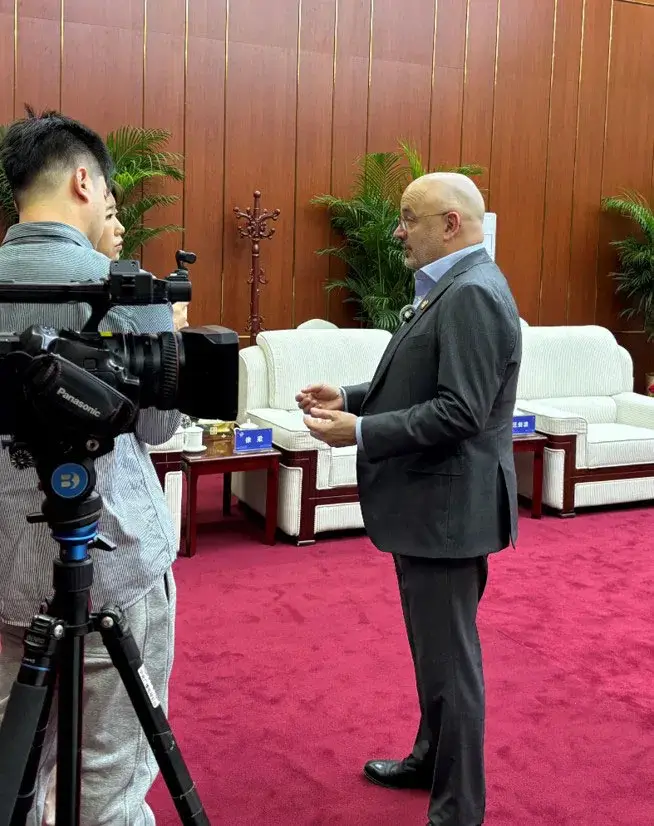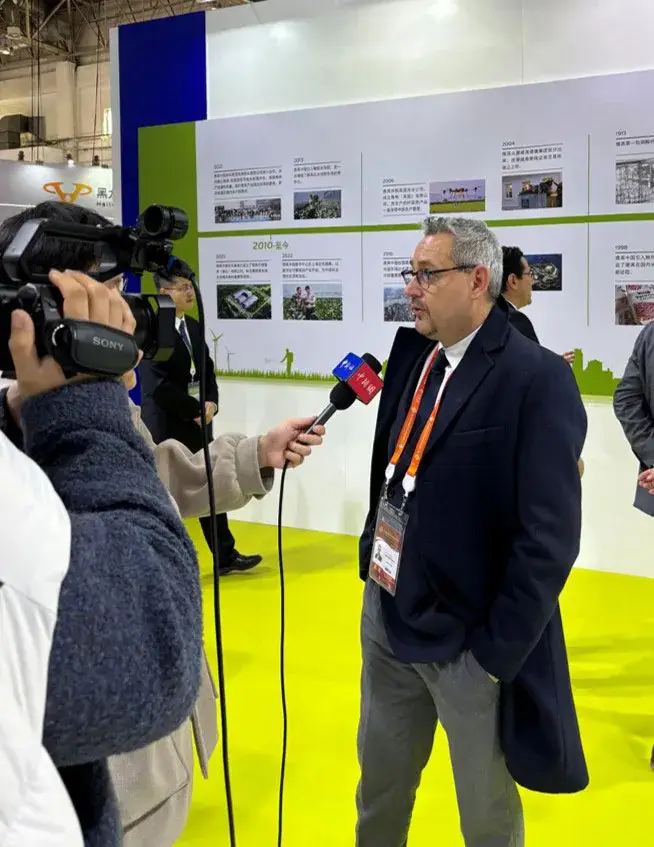This post was originally published on WBCSD
The 2nd China International Supply Chain Expo (CISCE), held from November 26 to 30, was a beacon for global collaboration in industrial and supply chains. With a focus on six major chains—Advanced Manufacturing, Clean Energy, Smart Vehicles, Digital Technology, Healthy Living, and Green Agriculture—the Expo was a testament to the importance of fostering partnerships for a sustainable future. This comprehensive display highlighted key segments of the chains from upstream to downstream, fostering clustering and complementary advantages among large, medium, and small enterprises. Over 600 companies and institutions from nearly 70 countries and regions participated in the exhibition. Vice President of China, Han Zheng, attended and addressed the opening ceremony.
WBCSD President & CEO Peter Bakker highlighted China’s pivotal role in advancing green technologies that are crucial for decarbonizing economic and industrial processes. With China leading in clean energy, smart mobility, battery, and hydrogen technologies, Bakker emphasized the country’s potential to remain at the heart of the global industrial supply chain.
Without global supply chains, the world would be much different,” Bakker stated. “China, as a key link in many supply chains, is crucial for our continued cooperation. It’s also imperative that we work towards making supply chains greener; innovation and collaboration are key to achieving these goals. WBCSD will continue to promote green development with Chinese enterprises.
Peter Bakker, WBCSD President & CEO
Media Coverage
Peter Bakker Highlights:

CCTV: Without a global supply chain, the world would look very different. China plays a crucial role in many supply chains, so it’s clear that continuing to work together is essential. Read here.
CGTN: The U.S. is not the only country in the world. While the U.S.’s involvement is important, it will not determine the future of the planet. Read here.
China News: Peter Bakker emphasized at China’s Supply Chain Expo that China’s leadership in green technologies—like clean energy and hydrogen—can drive global decarbonization. He highlighted China’s investments in renewable energy and the importance of carbon accounting and a circular economy for sustainable supply chains. Bakker also stressed material reuse and innovation as opportunities for new jobs and sustainability improvements. Read here.
Dominic Waughray Highlights:
China News: Dominic Waughray highlighted China’s innovations in clean energy, batteries, and manufacturing as key to decarbonization. Waughray stressed that without China’s input, green technology costs would rise by 20%. He advocated for international cooperation, citing initiatives like the Belt and Road and partnerships with emerging markets to align green development with equitable growth and poverty reduction. Read here.
CRI Online (China Radio International): Dominic Waughray stated that the scale and diversity of domestic and international exhibitors participating in this year’s Chain Expo are immense, highlighting China’s pivotal role in the global supply chain. He pointed out that currently, enhancing the resilience of the global supply chain and deepening international cooperation in industrial and supply chains are becoming increasingly important. China’s innovative capabilities and technological level in the supply chain field are remarkable, and its active participation in global economic and trade cooperation has played a crucial role in maintaining the stability of the global supply chain. Read here.

The post China’s second supply chain expo boosts green development: WBCSD President & CEO Peter Bakker first appeared on WBCSD.




0 Comments